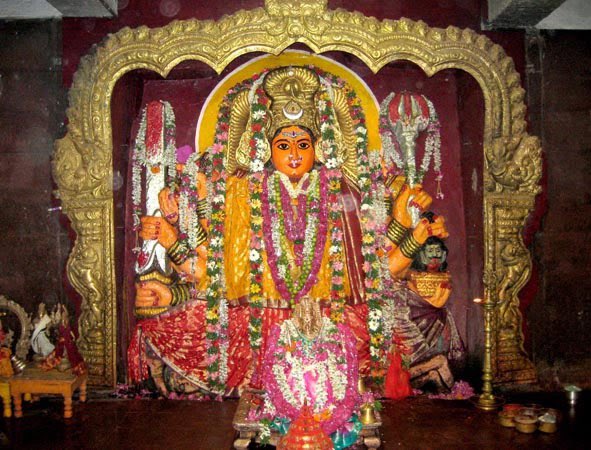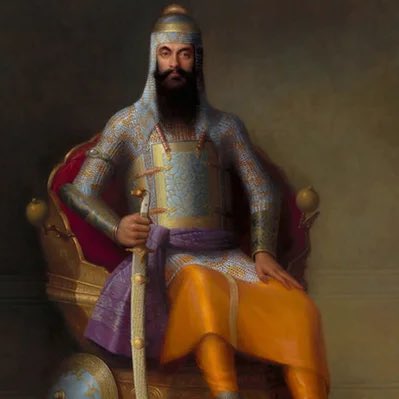1/n
Did you know India was the source of all the world's known diamonds, until the discovery of diamonds in Brazil in 1726. India was the only place where diamonds were mined till 18967. Hindus have known about diamonds for more than 7000 years.
Did you know India was the source of all the world's known diamonds, until the discovery of diamonds in Brazil in 1726. India was the only place where diamonds were mined till 18967. Hindus have known about diamonds for more than 7000 years.

2/n
They were called “Vajra” as Indra’s weapon of choice because lightning strikes & thunderstorms on colluvial deposits of diamonds would reveal diamonds in the earth. In 600 BCE, the Mahajanapada empire used units of measurements for diamonds.
They were called “Vajra” as Indra’s weapon of choice because lightning strikes & thunderstorms on colluvial deposits of diamonds would reveal diamonds in the earth. In 600 BCE, the Mahajanapada empire used units of measurements for diamonds.

3/n
In Chanakya’s Arthashastra the Superintendent of treasury was an expert of “Ratna Pariksha” to test the quality of gems like diamonds. The fame of India’s invaluable diamonds lured greedy invaders from Central Asia, Arabia & Europe.
In Chanakya’s Arthashastra the Superintendent of treasury was an expert of “Ratna Pariksha” to test the quality of gems like diamonds. The fame of India’s invaluable diamonds lured greedy invaders from Central Asia, Arabia & Europe.
4/n
Hindu science of Tantra considers diamond as a perfect octohedral crystal with sacred significance. It protects & purifies seekers by resonating with the Manipur Chakra in the solar plexus. A polished diamond reflects light as the enlightened soul reflects Self- realization
Hindu science of Tantra considers diamond as a perfect octohedral crystal with sacred significance. It protects & purifies seekers by resonating with the Manipur Chakra in the solar plexus. A polished diamond reflects light as the enlightened soul reflects Self- realization

5/n
Ancient Indian knowledge of diamonds was so advanced that there was a separate class of professionals called “Mandalins”, or diamond experts. These artisans were the first to use diamond tipped tools to cut & polish diamonds as there is no other material as hard as diamond.
Ancient Indian knowledge of diamonds was so advanced that there was a separate class of professionals called “Mandalins”, or diamond experts. These artisans were the first to use diamond tipped tools to cut & polish diamonds as there is no other material as hard as diamond.

6/n
The medicinal properties of diamond dust were used by Hindus in Ayurvedic medicines for the mind. Amazingly diamond nanoparticles are being used by researchers for neural prostheses today because of their ability to serve as electrochemical barriers.
The medicinal properties of diamond dust were used by Hindus in Ayurvedic medicines for the mind. Amazingly diamond nanoparticles are being used by researchers for neural prostheses today because of their ability to serve as electrochemical barriers.

7/n
Introduced to Europe by Alexander after he came to India, diamonds were in huge demand. By 13th c. CE Indians were trading diamonds to Venice by two routes: the southern route through Aden, Ethiopia, and Egypt, & the northern route through Arabia, Persia, Armenia, and Turkey
Introduced to Europe by Alexander after he came to India, diamonds were in huge demand. By 13th c. CE Indians were trading diamonds to Venice by two routes: the southern route through Aden, Ethiopia, and Egypt, & the northern route through Arabia, Persia, Armenia, and Turkey
8/n
A direct sea route to India was established by the greedy Portuguese. After the Mughals, British invaders looted Indian temples & palaces, stealing vast hoards of diamonds. They sold the diamonds to France, Spain, Italy and other European countries for huge profits
A direct sea route to India was established by the greedy Portuguese. After the Mughals, British invaders looted Indian temples & palaces, stealing vast hoards of diamonds. They sold the diamonds to France, Spain, Italy and other European countries for huge profits
9/n
The most famous diamond of India is the Kohinoor. Andhra Kakatiya king Prataparudra and queen Rudramadevi owned this massive diamond which was 793 carats when it was uncut . It adorned the Gyan Chakshu (Third eye) of their Kul Devi Goddess Bhadrakali in her temple.
The most famous diamond of India is the Kohinoor. Andhra Kakatiya king Prataparudra and queen Rudramadevi owned this massive diamond which was 793 carats when it was uncut . It adorned the Gyan Chakshu (Third eye) of their Kul Devi Goddess Bhadrakali in her temple.

10/n
Ghaysuddin Tughlaq (1320 AD) invaded the Kakatiya Kingdom and plundered the temple gold & snatched the Kohinoor.
Later, the diamond came into the possession of Babur who renamed Kohinoor as ‘Babur diamond’. The Mughals owned it till Aurangzeb came to power
Ghaysuddin Tughlaq (1320 AD) invaded the Kakatiya Kingdom and plundered the temple gold & snatched the Kohinoor.
Later, the diamond came into the possession of Babur who renamed Kohinoor as ‘Babur diamond’. The Mughals owned it till Aurangzeb came to power

11/n
Aurangzeb was not happy with its shine & got a lapidary to shape it. But in the process the weight was reduced to 186 carats from 793 carats. Aurangzeb, who had heard of the misery of his predecessors possessing it, cleverly gave it to the Badshahi Mosque.
Aurangzeb was not happy with its shine & got a lapidary to shape it. But in the process the weight was reduced to 186 carats from 793 carats. Aurangzeb, who had heard of the misery of his predecessors possessing it, cleverly gave it to the Badshahi Mosque.

12/n
Persian emperor Nadir Shah (1688-1747 AD) of Iran invaded Delhi Sultanate and plundered the Kohinoor & Peacock Throne to Iran. He was assassinated in 1747 AD by his army chief Ahmad Shah Durrani of Afghanistan who stole it . Durrani was defeated by Ranjit Singh in Lahore.

Persian emperor Nadir Shah (1688-1747 AD) of Iran invaded Delhi Sultanate and plundered the Kohinoor & Peacock Throne to Iran. He was assassinated in 1747 AD by his army chief Ahmad Shah Durrani of Afghanistan who stole it . Durrani was defeated by Ranjit Singh in Lahore.


13/n
Ranjit Singh kept it with him but donated it at his death to the temple of Lord Jagannath of Puri. But the British occupied Lahore in 1849 AD. & lied that he had given it to the queen of England. Ranjit Singh’s son Dulip Singh, only 13, was forced to go to London

Ranjit Singh kept it with him but donated it at his death to the temple of Lord Jagannath of Puri. But the British occupied Lahore in 1849 AD. & lied that he had given it to the queen of England. Ranjit Singh’s son Dulip Singh, only 13, was forced to go to London


14/n
He had to give the Kohinoor to queen Victoria on bent knee. A few years after that the British Empire started to decline and India won independence. It is said the Kohinoor is a pure stone meant only to adorn Bhadrakali & brings misfortune to humans who try to possess it.
He had to give the Kohinoor to queen Victoria on bent knee. A few years after that the British Empire started to decline and India won independence. It is said the Kohinoor is a pure stone meant only to adorn Bhadrakali & brings misfortune to humans who try to possess it.

15/n
Legend says Kohinoor is the original Syamantaka gem that Krishna acquired from Jambavana. Britain still refuses to return it to India & counts it as Royal property. It is said that Britain is cursed to be destroyed just like any previous unrightful owners of the Syamantaka.
Legend says Kohinoor is the original Syamantaka gem that Krishna acquired from Jambavana. Britain still refuses to return it to India & counts it as Royal property. It is said that Britain is cursed to be destroyed just like any previous unrightful owners of the Syamantaka.

16/n
Diamonds today are enabling unheard of technology in industries as varied as semiconductors, quantum computing, radiation detection, solid state lasers, optics, drug delivery, etc. It is India which discovered, manufactured & educated the world about this invaluable gem.
Diamonds today are enabling unheard of technology in industries as varied as semiconductors, quantum computing, radiation detection, solid state lasers, optics, drug delivery, etc. It is India which discovered, manufactured & educated the world about this invaluable gem.

• • •
Missing some Tweet in this thread? You can try to
force a refresh






















































